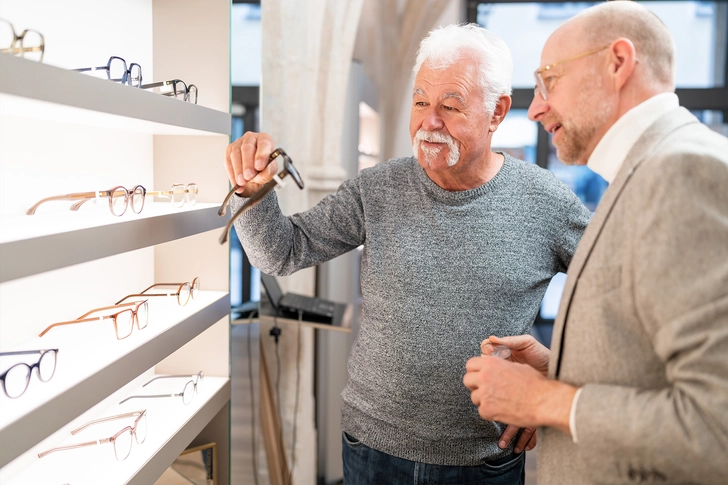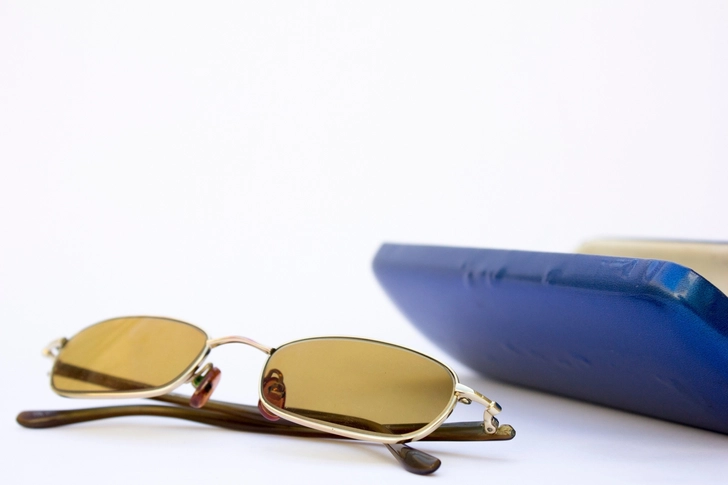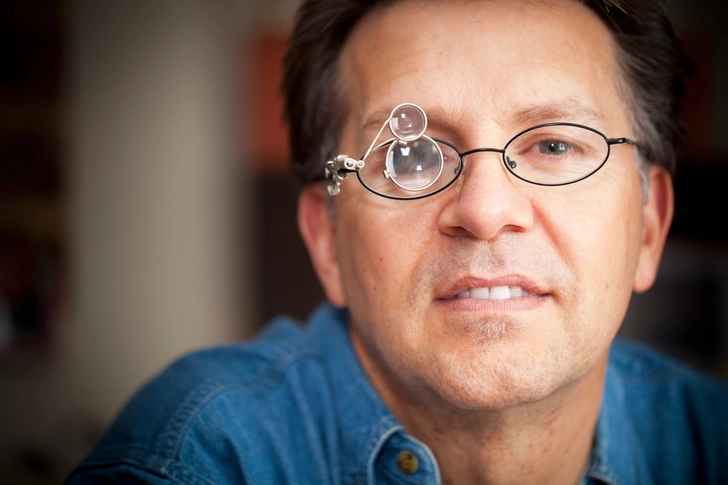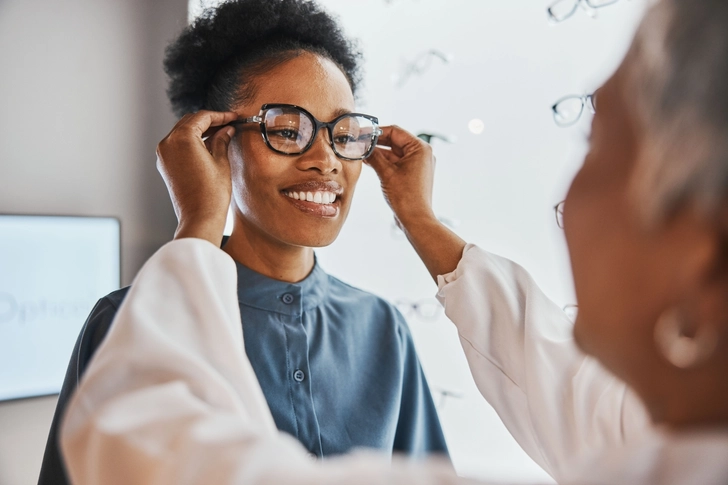- Age-Related Macular Degeneration (AMD)
- Wet Age-Related Macular Degeneration
- Geographic Atrophy
- Appointment Prep
- View Full Guide
Eyewear for AMD


Understanding AMD
Age-related macular degeneration (AMD) is a leading cause of vision loss in older adults. While it usually doesn’t cause complete blindness, it affects central vision, making tasks like reading and driving difficult. Specialty glasses and other vision aids can help you see better.

Specialty Eyeglasses
Specialized glasses can help you see both near and far more clearly. Your eye doctor will test your eye to see which lenses can boost your vision. Depending on your needs as your vision changes over time, you may need any of the following: yellow-tinted glasses, bioptic telescope, or prismatic lenses.

Yellow-Tinted Glasses
In early-stage AMD, little white spots in the retina can make it difficult to identify contrasts and textures. Yellow-tinted glasses can help bring vision contrast and improve your field of vision. They also protect your eyes by blocking 99% to 100% of harmful ultraviolet light.

Bioptic Telescope
A small telescope mounted on glasses known as a bioptic telescope may help you see distant objects better. These are a good option for people with advanced AMD who have trouble with their distance vision.

Prismatic lenses
Built-in prism glasses protect your vision from further damage by diverting light rays away from the macular part of the eyes.

Magnifiers
Handheld magnifiers come in various sizes and strengths, often with built-in lights to improve visibility. Some models have features like color contrast and image capture, making them useful for reading and other detailed tasks. Tabletop magnifiers are mounted on stands and can help those with hand tremors or poor eye-hand coordination.

CCTV Magnifiers
Closed-circuit television (CCTV) magnifiers use a camera system to project magnified images onto a screen. This technology allows for larger and clearer viewing of text and images.

Choosing Vision Aids
Specialty eyeglasses and other vision aids can help you make the most of your eyesight and manage daily tasks more easily. You can ask your eye doctor or a low-vision specialist, also called a vision rehabilitation specialist, can help you choose specialty glasses or other vision aids.
Photo Credits:
1. iStock/Getty Images
2. r.classen/Shutterstock
3. Daniel Limantara/Shutterstock
4. Design Pics/Getty Images
5. iStock/Getty Images
6. Lena Evans/Shutterstock
7. stockfour/Shutterstock
8. astarot/Shutterstock
BrightFocus Foundation: "Age-Related Macular Degeneration: Facts and Figures," "Living with Macular Degeneration," "Specialty Glasses for Macular Degeneration."
UC Irvine Health: "Sunglasses — Protect your eyes outdoors," "Low Vision Assistance."
Optometrists Network: "What are Prism Lenses?"
Macular Society: "Low vision aids."
VisionAware: “What Type of Cane Should I Use?”
American Academy of Ophthalmology: "Low Vision Assistive Devices."
American Macular Degeneration Foundation: "Assistive Technology for Age-related Macular Degeneration."
HIE Help Center: "Purchasing Adaptive Equipment: 20 Questions to Ask Before You Buy."
The Carroll Center for the Blind: "Magnifiers."
Association of Blind Citizens: "Assistive Technology Fund."
iCanConnect: "Apply to iCanConnect."
NeedyMeds: "Diagnosis-Based Assistance Programs for Blindness."
Living Well With Low Vision: "Suppliers of Low Vision Devices," "Suppliers of Reading Materials in Audio."
The Low Vision Shop: “WeWALK Smart Cane.”
Translational Vision Science and Technology: “Bioptic Telescope Use in Naturalistic Driving by People with Visual Impairment.”
Social Security Administration: “If You’re Blind or Have Low Vision --How We Can Help.”
California Council of the Blind: “A Review of Smart Glasses.”
Myvision.org: “Implantable Miniature Telescope Lens for Macular Degeneration.”IMAGES PROVIDED BY:
American Optometric Association: “Low Vision and Vision Rehabilitation.”
U.S. Library of Congress National Library Service for the Blind and Print Disabled: “Devices and Aids.”
Kennedy Krieger Institute: “Assistive Technology Clinic.”
The Chicago Lighthouse: “How Does Technology Help People Who Are Blind or Visually Impaired?”
Cleveland Clinic: “Low Vision.”
Vision Aware: “Helpful Non-Optical Devices for Low Vision,” “Using Large Print,” “Using a Self-Threading Needle,” “Using a Hexe or ‘Witch’ Needle Threader.”
American Macular Degeneration Foundation: “Ultra-Violet and Blue Light Aggravate Macular Degeneration.”
Vision Australia: “E-Book Readers.”
University of Illinois Library: “Blind/Visual Impairment: Common Assistive Technologies.”
Journal of Biomedical Optics: “In-The-Spectacle Lens Teleoptic Device.”
American Academy of Ophthalmology: “Low Vision Assistive Devices.”
USC Roski Eye Institute: “Top 10 Apps for Visually Impaired People.”
American Foundation for the Blind: “Using Your Phone's Low-Vision Features.”
Paths to Literacy: “The 7 Best Apps to Help People with Visual Impairments Recognize Objects.”
Abilitynet: “Three cool smart glasses to help people who are blind or have sight loss.”